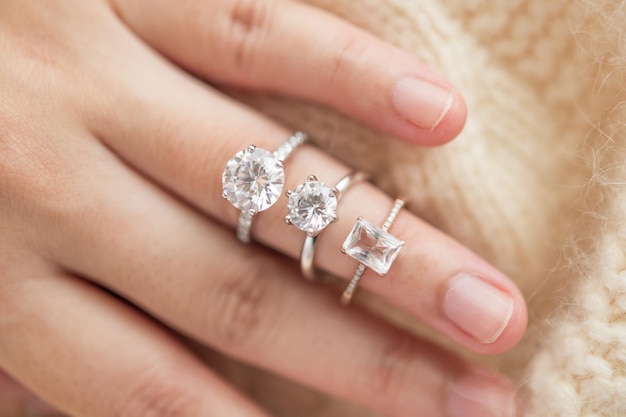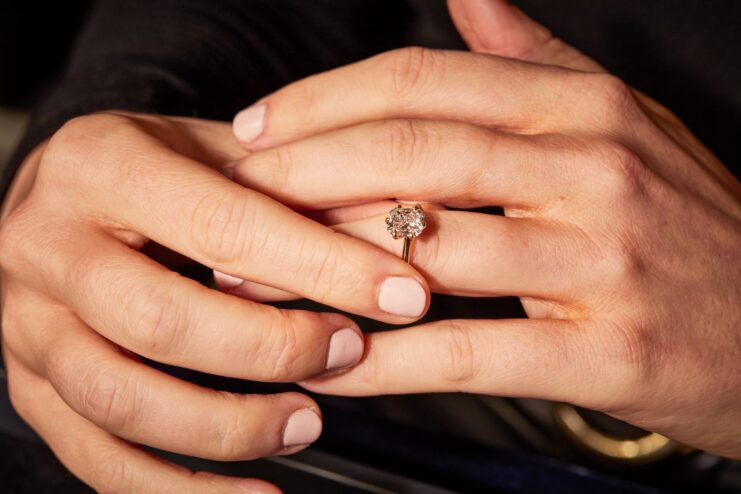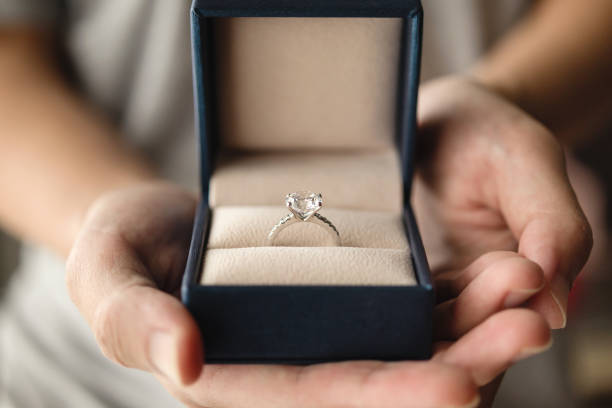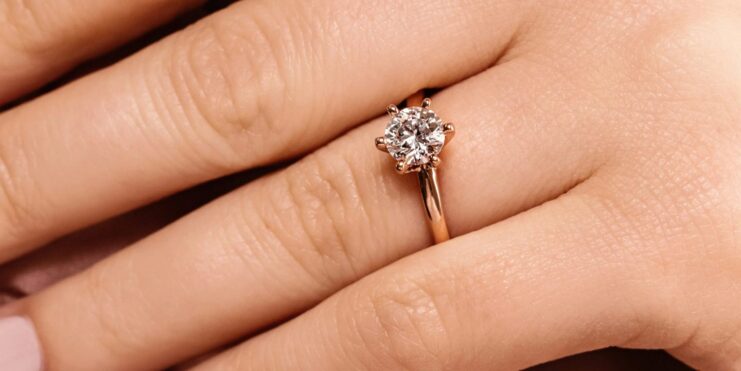Choosing a diamond ring can be a daunting task, as it is a significant investment and an important symbol of love and commitment. There are many factors to consider when selecting a diamond ring, including the diamond’s cut, clarity, carat weight, and color, as well as some other important things we’ll address in the next lines. To help you make an informed decision, we have outlined seven essential steps to choosing a diamond ring.
1. Determine Your Budget
The first step in choosing a diamond ring is to determine your budget. It’s important to be aware of how much money you’re able to spend, so that you may narrow down your options. Consider how much you are willing to spend on the ring, taking into account other financial obligations and priorities. Keep in mind that the cost of a diamond ring can vary greatly depending on factors such as the diamond’s quality, carat weight, and cut. Diamond rings can range from a few hundred to tens of thousands of dollars, so it’s important to have a budget in mind and stick to it. Remember that the 4Cs will all affect the price, so consider which factors are most important to you when making your choice. Setting a budget can help keep your focus on diamonds that fit within your price range.
2. Choose the Diamond’s Shape and Cut

The shape and cut of a diamond can have a significant impact on its beauty and value. The most popular diamond shapes include round, princess, cushion, and emerald. Each shape has its unique characteristics and style, so consider which one will best fit the recipient’s taste and personality. The cut of a diamond is also an essential factor to consider since it determines how well the diamond reflects light. A well-cut diamond will have excellent sparkle, fire, and brilliance, making it more valuable and appealing.
3. Consider the Diamond’s Clarity and Color
The clarity and color of a diamond are essential factors to consider when choosing a diamond ring. Diamond color is graded on a scale from D (colorless) to Z (yellow or brown), with colorless diamonds being the most valuable. Clarity refers to the presence of any internal or external blemishes, and the fewer inclusions, the higher the diamond’s clarity grade. Consider your personal preference and budget when choosing a diamond’s color and clarity. Keep in mind that the importance of these factors may vary depending on the size and shape of the diamond.
4. Choose Quality
The 4Cs: The 4Cs of diamond quality refer to the cut, clarity, color, and carat weight of the diamond. Each of these factors can affect the diamond’s value and appearance. The cut is perhaps the most important factor, as it determines how well the diamond reflects light and sparkles. Clarity refers to the presence of inclusions or blemishes within the diamond. Color can range from clear (or “white”) to yellow or even pink, with clear diamonds typically being the most valuable. Carat weight refers to the size of the diamond.
5. Choose a Setting and Style

Choosing the right setting and style for your diamond ring is crucial, as it will significantly impact its overall appearance and durability. There are several types of settings to choose from, including prong, bezel, and channel settings. Each setting has its unique features and benefits, so consider which one will best showcase the diamond while providing adequate protection. The style of the ring can also vary greatly, from classic solitaires to more intricate designs, such as halos, side stones, or three-stone rings. Also, diamonds come in many shapes, including round, princess, pear, marquise, oval, and more. The shape you choose will depend on personal preference and the setting you choose. Choose a style that reflects the recipient’s personality and taste while considering their lifestyle and comfort, and don’t forget to explore options like Puravida Bracelets for a diverse jewelry collection.
6. Choose a Vendor Carefully
When choosing a vendor for your diamond ring, it is essential to do your research and choose a reputable and trustworthy seller. Look for vendors that are certified by recognized organizations such as the Gemological Institute of America (GIA) or the American Gem Society (AGS), as these organizations have strict standards for diamond quality and provide objective assessments of diamonds. You’ll probably want to check out Watchlink and choose the ring that fits your needs best. Read reviews and ask for referrals from friends and family who have had positive experiences with diamond sellers. Also, make sure the jewelry store offers a return policy and a warranty that protects against defects or damages.
7. Consider getting insurance

And last, but not least, after you’ve chosen and bought the diamond, think about getting the diamond insured, just to be on the safe side. Diamond insurance is a type of insurance that specifically covers the loss, damage, or theft of your diamond. While some homeowners’ or renters’ insurance policies may cover jewelry to some extent, they may not provide sufficient coverage for high-value items such as diamonds. A diamond ring is a valuable and treasured possession that should be protected. Consider getting insurance for your diamond ring to protect against theft, loss, or damage. Many insurance providers offer specialized policies for jewelry that cover a wide range of incidents, including loss, theft, and damage. Be sure to read the policy carefully and understand the terms and conditions before purchasing insurance.
Key takeaways
Choosing a diamond ring is an exciting and significant decision that requires careful consideration and planning. By following these five essential steps, you can make an informed decision and find the perfect diamond ring for your loved one or yourself. Determine your budget, choose the diamond’s shape and cut, consider the diamond’s color and clarity, choose a setting and style that suits the recipient’s taste and lifestyle, and select a reputable vendor. With these steps in mind, you can ensure that your diamond ring is a beautiful and lasting symbol of love and commitment. Hopefully, these tips will help you – now it is just up to you to make sure your better half says YES!

